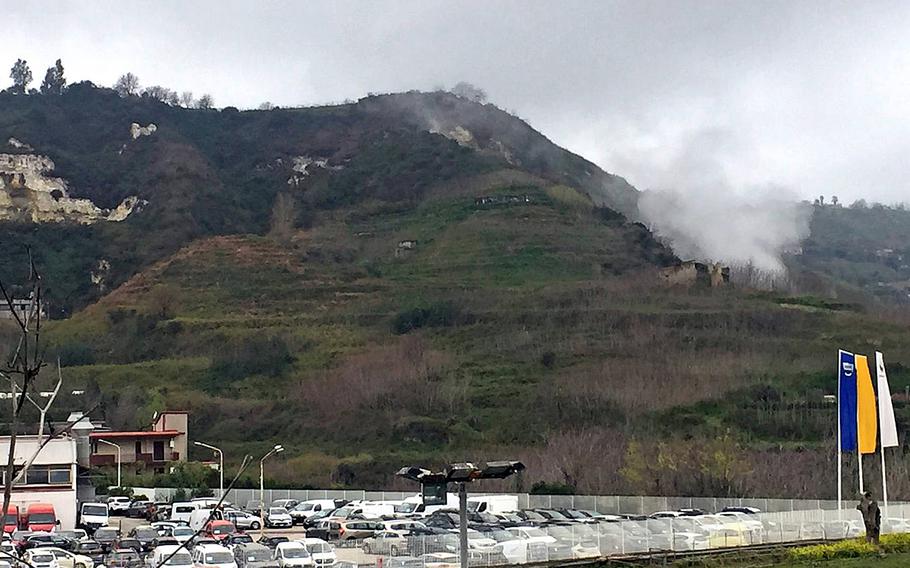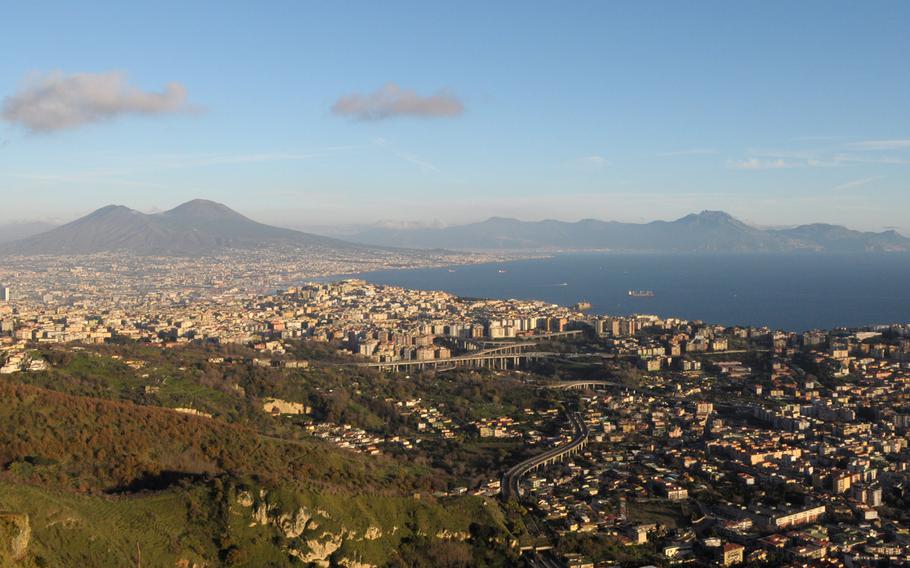
Steam from a crater of Campi Flegrei billows in Pozzuoli, Italy, in 2018. The Navy is requiring personnel planning to live in Pozzuoli and other areas to sign a letter acknowledging they are aware of the dangers associated with living in high-risk areas for volcanic eruptions and earthquakes. (Stars and Stripes)
NAPLES, Italy — A new Navy requirement is forcing some service members and Defense Department civilians to sign a letter saying that they understand the danger of living in areas of Naples deemed high-risk during a volcanic eruption or earthquake.
The requirement applies to service members and DOD civilians who want to move into a residence in red or yellow zones associated with Campi Flegrei, a large volcanic caldera situated to the city’s northwest.
The undated letter was recently sent to prospective tenants by the Naval Support Activity Naples housing department and says the requirement came from the base’s commanding officer, Capt. John Randazzo.
The Italian government-designated zones include a large swath of Naples popular with the military community for its sea views, villa-like living and proximity to restaurants, bars and shopping. Among them are the commune of Pozzuoli and the districts of Posillipo, Chiaia and Vomero.
“This extra requirement is to allow you and your family to make the most informed decision possible and for your command to manage their emergency management response and mission essential personnel,” according to the letter.
Commands also must sign the letter before a lease can be completed, it says.

Naples, Italy, sits on a stunning coastline and landscape with volcanic activity. While Mount Vesuvius, in the background, is often considered the greatest eruption threat in the area, volcanologists say Campi Flegrei, a large volcanic caldera situated to the city’s northwest, may be just as dangerous. (Stars and Stripes)
It’s unclear when the housing department began sending the letter or how many people have received it. Another unknown is whether the base plans to require DOD personnel already living in the designated areas to sign it.
NSA Naples officials didn’t immediately answer those or other questions Wednesday.
Last year, Naples was hit by thousands of small earthquakes and other indications of volcanic activity, rattling residents and catching the attention of volcanologists.
The strongest of those, a magnitude 4.2 quake on Sept. 27, did little damage but sparked fears that a seismic crisis might be underway for the first time in more than 40 years.
The last major seismic activity in the region was the magnitude 6.9 Irpinia earthquake on Nov. 23, 1980, centered in Castelnuovo di Conza, about 81 miles southeast of Naples. The earthquake killed nearly 3,000 and injured at least 8,000 in the southern Italian regions of Campania, Basilicata and Puglia.
Campi Flegrei consists of a network of craters and other volcanic structures, mostly under the Bay of Naples. It is not directly connected to Mount Vesuvius but results from the same complicated tectonics of Italy.
Experts say there is no imminent threat from Campi Flegrei. Still, the Italian government is making plans should mass evacuations be needed.
It has designated red and yellow zones in Naples based on proximity to the caldera and the associated dangers from an eruption.
NSA Naples leaders maintain communication with Italian emergency management officials, who offer information about volcanic or seismic activity along with their recommendations, base spokesman Lt. j.g. Cody Milam told Stars and Stripes in October.
“We take this information and use it to influence how we operate and define environmental threats,” Milam said.